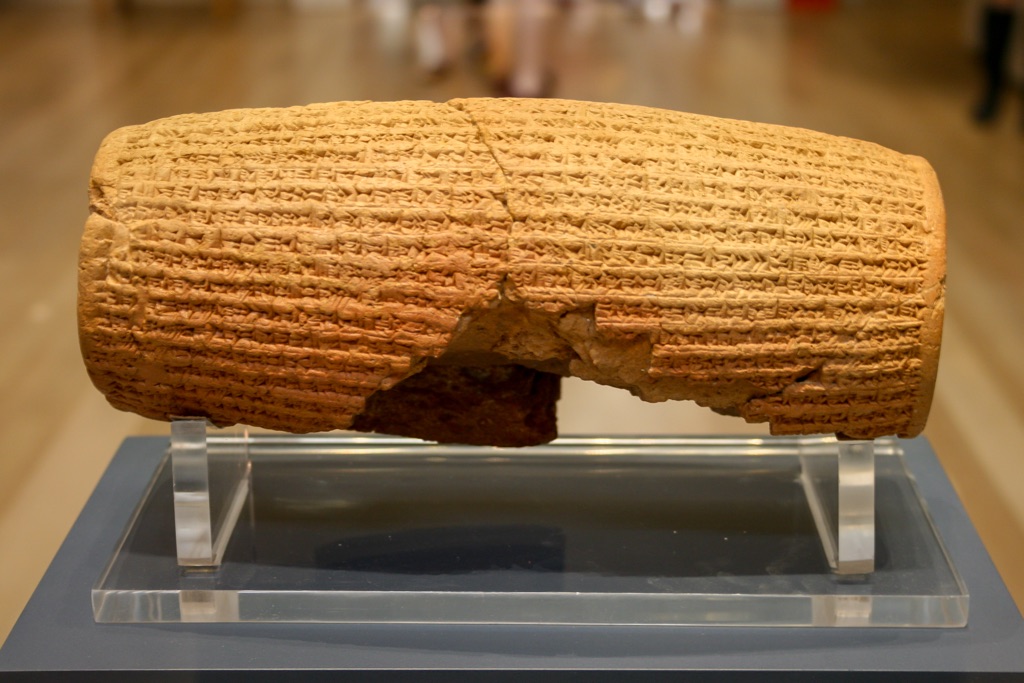The Cyrus Cylinder is an ancient clay artifact that dates back to the 6th century BC. It was created during the reign of Cyrus the Great, the founder of the Achaemenid Empire in Persia. The cylinder is inscribed in Akkadian cuneiform script and has been hailed as the first charter of human rights. It was discovered in 1879 during excavations in Babylon and has since been a key piece of evidence in understanding ancient Persian history and the early concepts of governance and human rights.
Get your dose of History via Email
Historical Background of the Cyrus Cylinder
The Cyrus Cylinder was unearthed in 1879 by the Assyrian-British archaeologist Hormuzd Rassam. The discovery occurred within the ruins of Babylon, in modern-day Iraq. It was found during a comprehensive excavation sponsored by the British Museum. The artifact was created by order of Cyrus the Great, who established the vast Achaemenid Empire after conquering Babylon in 539 BC. The cylinder’s text praises Cyrus’s kingly virtues and his policy of repatriation of the Jewish people, among others.
Cyrus the Great is renowned for his progressive rule and respect for the cultures and religions of the lands he conquered. This approach is reflected in the cylinder’s inscriptions. The artifact itself is a small clay cylinder, measuring 22.5 centimeters in length. It was buried in the foundations of the Esagila, the main temple of Babylon, as a foundation deposit following the Persian conquest of the city.
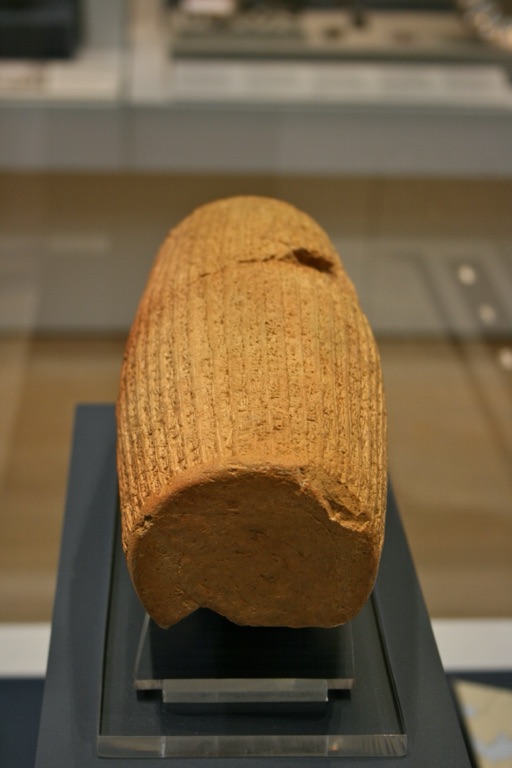
After its creation, the Cyrus Cylinder lay buried for centuries. It was not until the late 19th century that it resurfaced, providing historians with invaluable insights. The cylinder has been linked to the biblical account of Cyrus’s decree, which allowed exiled peoples, including the Jews, to return to their homelands. This act has been interpreted as an early example of enlightened governance.
The Cyrus Cylinder has also played a role in modern history. It was used as a political symbol during the reign of the last Shah of Iran, Mohammad Reza Pahlavi. The Shah saw the cylinder as a symbol of Iran’s long history of statecraft and monarchy. The artifact has been exhibited around the world, serving as a cultural ambassador for Iran and a testament to its ancient civilization.
Today, the Cyrus Cylinder is housed in the British Museum in London. It continues to be a subject of study and admiration. Its legacy extends beyond its historical context, influencing contemporary discussions on human rights and cultural heritage. The cylinder’s discovery and ongoing significance underscore its importance as a link between the ancient and modern worlds.
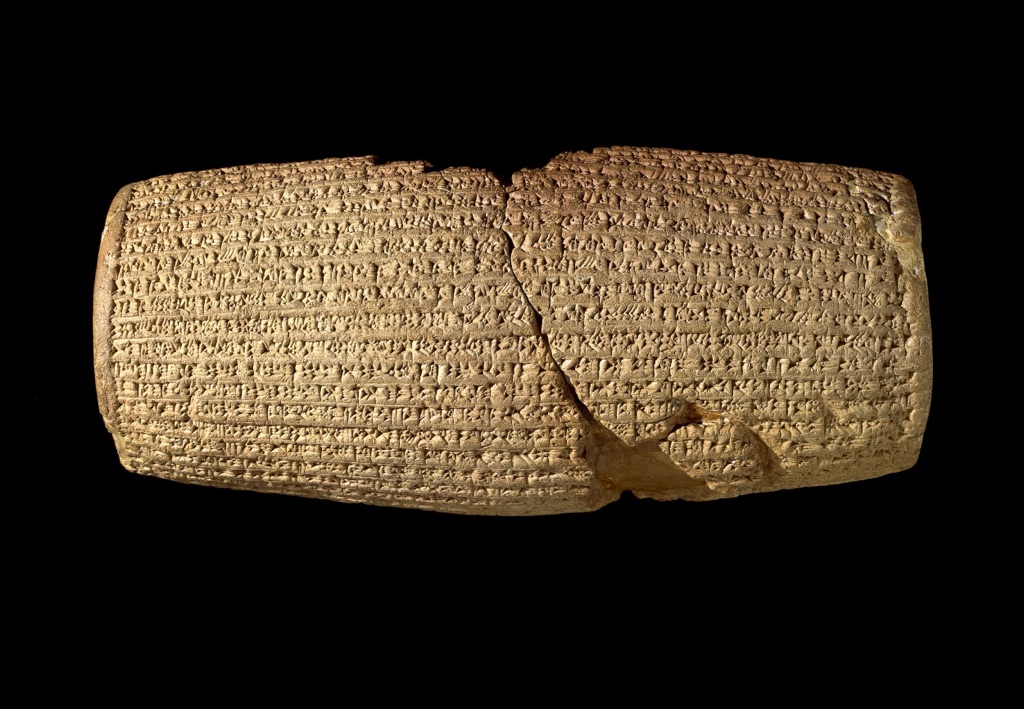
About the Cyrus Cylinder
The Cyrus Cylinder is an artifact made of baked clay, shaped into a cylindrical form. It measures about 22.5 centimeters in length and 10 centimeters in diameter. The cylinder’s surface is inscribed with Akkadian cuneiform script, which was the diplomatic language of the time. The text on the cylinder is composed of 45 lines and was crafted with meticulous care.
The inscriptions on the Cyrus Cylinder detail the conquest of Babylon by Cyrus the Great. They also outline his policy of repatriation and his efforts to restore temples and religious cults. The text is significant for its expression of Cyrus’s respect for the traditions and religions of the lands he conquered. This approach was revolutionary for its time and contrasts with the practices of many other ancient rulers.
The construction of the cylinder reflects the advanced skills of Achaemenid craftsmen. The use of clay as a medium was common in Mesopotamia, where writing on clay tablets was a well-established practice. The cylinder’s inscriptions were likely made using a reed stylus, which was pressed into the soft clay before it was baked and hardened.
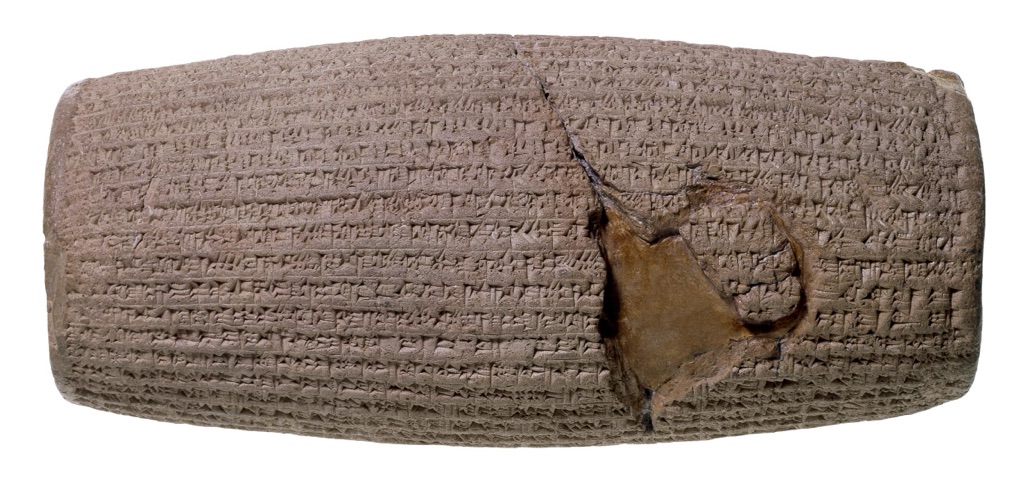
Architecturally, the Cyrus Cylinder does not have a structure, but its creation required a high level of craftsmanship. The cuneiform script is precise and clear, indicating the work of a skilled scribe. The cylinder’s preservation over the millennia can be attributed to the durability of baked clay and the careful construction of the artifact.
The Cyrus Cylinder’s design and inscriptions provide a window into the political and religious practices of the ancient Achaemenid Empire. Its discovery has allowed historians to corroborate historical accounts from other sources, such as the Hebrew Bible. The artifact remains a testament to the empire’s sophistication and Cyrus’s innovative approach to leadership and governance.
Theories and Interpretations
The Cyrus Cylinder has been subject to various interpretations and theories since its discovery. Some scholars view it as the world’s first charter of human rights, given its content that advocates for freedom of worship and the repatriation of deported peoples. However, others argue that it should be seen within the context of traditional Mesopotamian kingly inscriptions, which often included similar themes of benevolent rule.
There are theories that the cylinder’s text was a form of propaganda by Cyrus to legitimize his rule over Babylon. By presenting himself as a liberator rather than a conqueror, Cyrus could have aimed to win the support of the Babylonian people. This interpretation suggests that the cylinder was a political tool designed to establish Cyrus’s authority and benevolence.
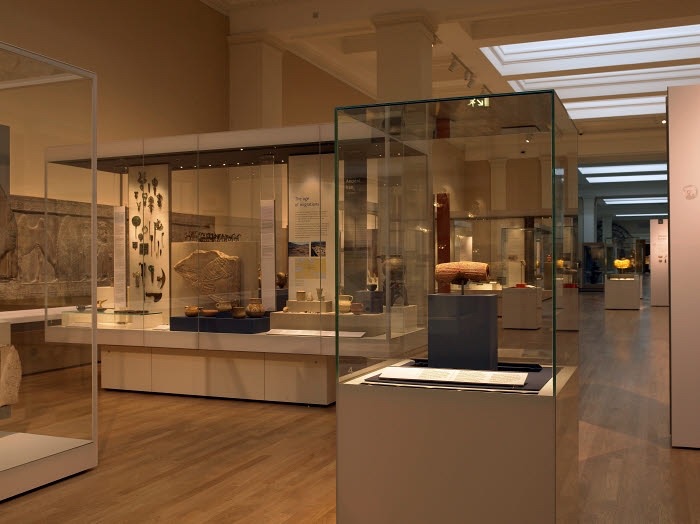
The cylinder has also been analyzed for its religious significance. It mentions Marduk, the chief deity of Babylon, and suggests that Cyrus was chosen by the god to restore order. This divine endorsement would have been a powerful message to the Babylonian populace, further solidifying Cyrus’s position as their rightful ruler.
Historians have used the Cyrus Cylinder to cross-reference dates and events from other historical records. The cylinder’s account of the fall of Babylon has been matched with other sources, providing a more complete picture of the period. The dating of the cylinder has been confirmed through linguistic analysis and comparison with other cuneiform texts.
Despite its age, the Cyrus Cylinder continues to be a subject of debate and study. Its significance as a historical document is undisputed, but the extent to which it represents a genuine move towards human rights is still discussed. The artifact remains a focal point for discussions on ancient governance, ethics, and the evolution of human rights concepts.
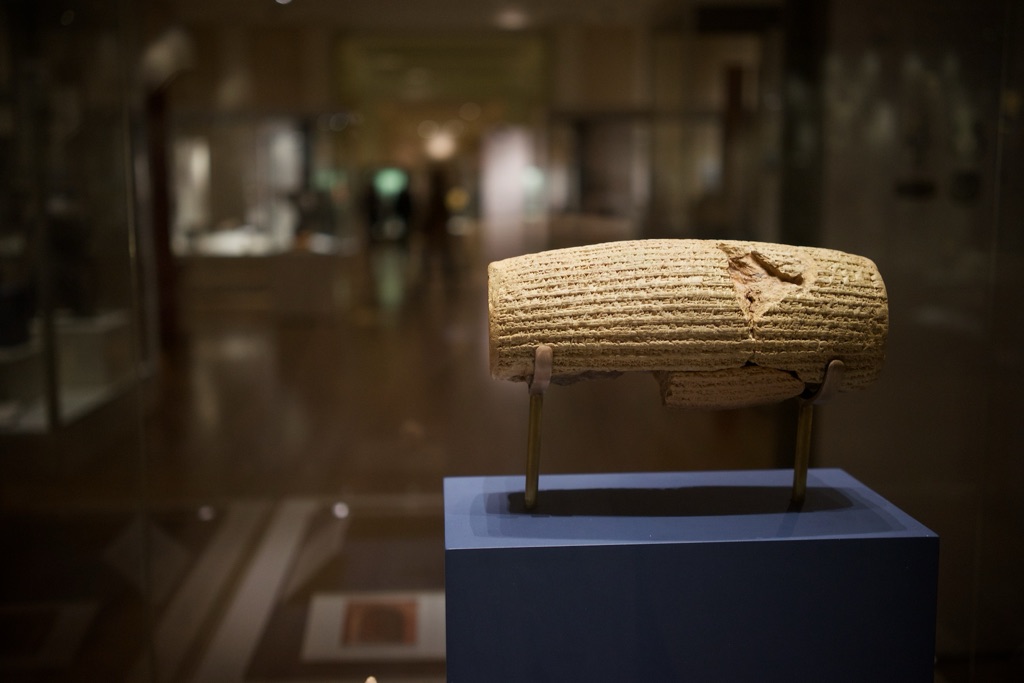
At a glance
Country: Iraq (originally part of ancient Babylon)
Civilization: Achaemenid Empire (Persian)
Age: Approximately 2,600 years old (6th century BC)
Conclusion and Sources
Reputable sources used in the creation of this article include:
- Wikipedia: https://en.wikipedia.org/wiki/Cyrus_Cylinder
- The British Museum: https://www.britishmuseum.org/collection/object/W_1880-0617-1941

